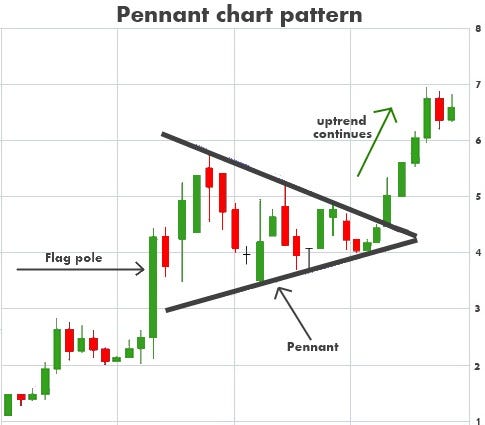20 Top Ideas For Choosing AI Stock Analysing Sites
20 Top Ideas For Choosing AI Stock Analysing Sites
Blog Article
Top 10 Tips To Assess The Privacy And Security Of Ai Stock Trading Platforms
Security and privacy are paramount when using AI stock predicting/analyzing trading platforms because they typically handle sensitive financial information and personal information. An attack on data or misuse could result in substantial financial loss as and reputational damage. Here are the top 10 tips for evaluating the security and privacy on these platforms.
1. Evaluation of Data Security
Secure transmission of information Be sure that your platform uses secure protocols (e.g. TLS/SSL), to encrypt information that is transferred between your devices and servers.
Verify encryption at the time of rest. Verify that sensitive data is encrypted by the platform's servers using strong encryption standards (e.g. AES-128).
Verify if the platform supports encryption end-to-end of sensitive information or communications.
2. Test the Authentication Measures
Two-factor authentication (also called copyright) is an excellent way to increase security.
Biometric authentication - Look to see if there are biometric options to use for mobile app login (e.g. finger print, facial recognition, etc.).
Password policy - Make sure that the platform enforces strong password policies (e.g. length, requirements for length, complexity requirements).
3. Examine for Compliance
Financial regulations: Make sure your platform is compliant with the relevant laws governing financial transactions (e.g. SEC FINRA MiFID II).
Laws on data protection: Ensure compliance with privacy laws (e.g., GDPR, CCPA) if you are operating in or trading with areas which are covered by these laws.
Audit certifications: Check if the platform has undergone third-party security audits or holds certifications (e.g., SOC 2, ISO 27001).
Review Controls for Accessing Data
Role-based access: Ensure that the platform is using role-based access controls (RBAC) to limit access to data to only authorized users.
Check if you are able to set different permission levels for teams or users.
Monitoring activity: Ensure that the platform records and monitors user activity for any suspicious behavior.
5. Assess Vulnerability Management
Regular updates: Ensure that the platform is regularly updating its software in order to patch security holes.
Verify that your platform is regularly screened to penetration testing to identify security vulnerabilities and fix these vulnerabilities.
Programs for bug bounty: Check if the platform has a bug bounty program to incentivize external security researchers to identify security holes.
6. Evaluate Data Privacy Policies
Transparency Privacy Policies: Read the privacy guidelines of the platform to understand how your data is collected, used and shared.
Data minimization: Ensure that the platform collects only information essential to its function.
Third-party data sharing: Verify that the platform is able to share your data with a third party, and If so in the process of sharing, what.
7. Check for Secure API Use
API security: Ensure that the platform's API uses secured authentication (e.g. OAuth, API Keys) and that it encrypts all data exchanges.
Rate limit: Determine if the API has rate limits to prevent abuse or brute-force attacks.
Check whether the platform records API access to monitor, auditing and reporting.
8. Assess the recovery of an incident and respond
Plan for incident response The platform is equipped with a plan to handle data breaches and security incidents.
Notification policies: Verify if the platform notifies users promptly in the event of a security breach.
Backups of data: Make sure the platform regularly backups its data and has a disaster-recovery plan.
9. Examine the physical security measures
Data center security: Confirm that the platform servers are located in secure datacenters that are secured and have physical security measures (e.g. monitoring, access control).
Redundancy Check the redundant systems of the platform in order to ensure that data is available in the event of the hardware fails.
Geographic distribution: To improve resilience, ensure that the information is spread over multiple sites.
10. Test Privacy Controls for Users
Data deletion: Make sure the platform permits you to permanently delete your personal data once you cease using the platform.
Privacy settings: Verify whether the platform offers privacy settings that control the data that is shared or visible.
Verify the data's anonymity for analytics and machine learning.
Bonus Tips
User reviews and reputation Check out the reviews and feedback of users to get a feel for how safe and secure a platform.
Trial period - Use the demo or trial version of the software to test its security features as well as privacy controls.
Customer Support: Make sure that the platform provides solid assistance for any questions or concerns relating to security.
You can assess the privacy, security, as well as the accuracy of AI trading platforms for stocks by following these suggestions. This will ensure that your financial information as well as personal information are secure. A secure platform protects your assets and builds confidence in its services. Follow the recommended stock predictor advice for blog tips including ai stocks to invest in, ai stock trading app, ai investing, ai stock price prediction, incite, investment ai, best stock analysis app, ai investing app, free ai trading bot, trader ai intal and more.
Top 10 Tips For Assessing The Scalability Ai Technology For Predicting And Analyzing Trading Platforms
Scalability is an important element in determining whether AI-driven platforms that predict stock prices and trading can handle the increasing demand of users, volume of data and market complexity. Here are the top 10 suggestions on how to evaluate the scaleability.
1. Evaluate Data Handling Capacity
Tip: Verify that the platform has the capacity to process and analyze large databases.
Why is that? Scalable platforms must be able handle growing volume of data without performance reduction.
2. Real-time testing of processing capabilities
Tip: Assess how well the platform processes real-time data streams, for example, live stock prices, or breaking news.
Why: The importance of real-time analysis is for trading decisions, and delays could result in missed opportunities.
3. Examine Cloud Infrastructure for Elasticity
Tip: Determine whether the platform utilizes cloud-based infrastructure (e.g., AWS, Google Cloud, Azure) and is able to scale resources dynamically.
Why? Cloud platforms allow flexibility. The system can scale up or back down according to the demand.
4. Algorithm Efficiency
Tips: Examine the computational effectiveness and the accuracy of AI models to make predictions.
Why: Complex algorithms require a lot of resources. Thus optimizing them can aid in scaling.
5. Examine Parallel and Distributed Computing
Tip: Determine if a platform makes use of parallel processing or distributed computing frameworks.
What are they: These technologies facilitate faster data processing and analysis across multiple nodes.
6. Examine API Integration and Interoperability
Test the platform’s integration capabilities with APIs that are external to the platform.
The reason: seamless platform integration allows it to adapt to any new data sources or trading environments.
7. Analyze User Load Handling
You can simulate user traffic and see how the platform reacts.
Why should scalable platforms deliver the same quality of service regardless of how many users are there.
8. Review the Model Retraining Adaptability
Tips: Check how often and efficiently AI models are trained with new data.
The reason: Markets change, and models must adapt quickly to maintain accuracy.
9. Check Fault Tolerance (Fault Tolerance) and Redundancy
Tips. Check that your platform has failover mechanisms and redundancy to handle hardware or software malfunctions.
Why: Downtime is costly for trading. Therefore, fault tolerance is vital to scaling.
10. Monitor Cost Efficiency
Review the costs associated with your platform, including the cloud resources, storage and computing power.
Reason: Scalability should not result in an unsustainable price which is why balancing performance with expense is essential.
Bonus Tip Future-Proofing
Be sure that the platform incorporates advanced technology (e.g. quantum computing or advanced NLP), and is able to adapt to regulatory changes.
It is possible to assess the capacity and effectiveness of AI trading and stock prediction platforms by paying attention to this aspect. This will help ensure that they're efficient as well as robust and prepared for growth. Take a look at the top her latest blog for best free copyright trading bot for blog tips including stock analysis websites, ai copyright trading, ai bot for copyright trading, trade ai, stock predictor, best stocks to invest in, trading ai, ai investing tools, ai trading bot, trading ai bot and more.